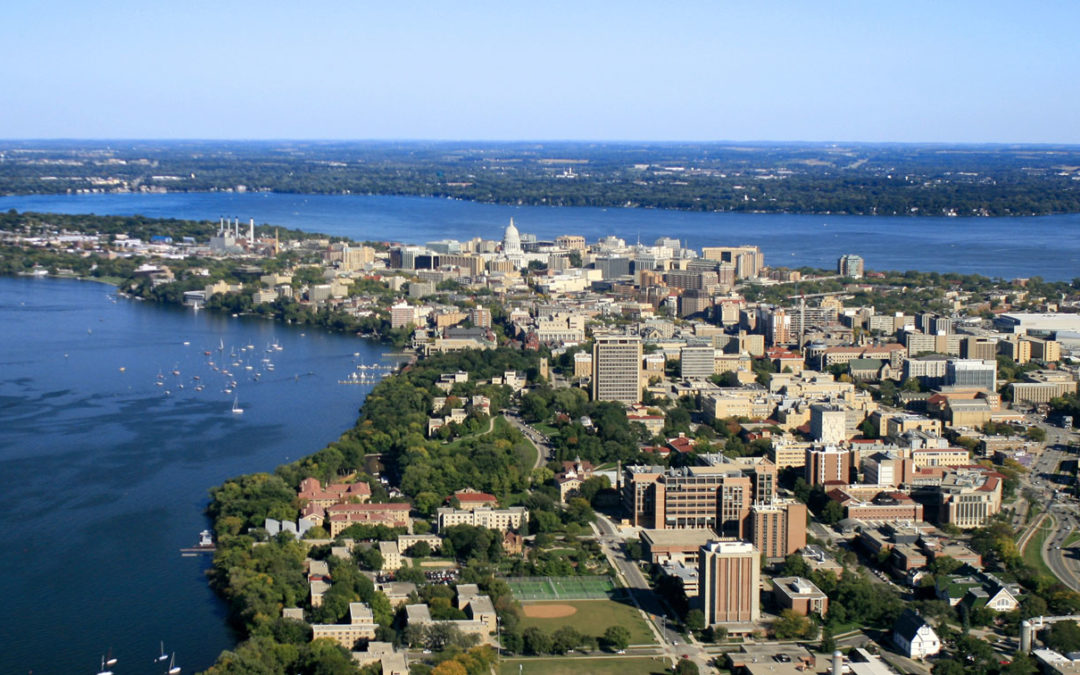
by Michael Vickerman | Mar 28, 2019 | Local Government, Local Initiatives, Renewables, Sustainability
The Madison Common Council adopted in late March a resolution setting 2030 as the deadline to achieve a 100% renewable energy and net-zero carbon goal for city operations. Spearheaded by the Sustainable Madison Committee (SMC), the resolution empowers city staff to lead by example and initiate aggressive policies and practices designed to reduce carbon emissions across the community.
Madison’s action comes on the heels of similar resolutions adopted by its neighbors, specifically the cities of Fitchburg and Monona, committing themselves to procure renewable energy sources to power their operations.
In late February Fitchburg’s Common Council resolved to offset 100% of the city’s electricity demands from renewable energy resources by 2030. A week later, Monona adopted a resolution establishing an identical goal and deadline for its own electricity use, and coupled it with a renewable energy commitment by 2040 applicable to other energy uses, such as heating buildings and fueling vehicles.
With these resolutions on the books, there are now five Wisconsin cities that have embraced a 100% renewable energy (or electricity) future for its operations, and have set deadlines for achieving it. The other two cities on that list are Eau Claire and Middleton (see comparison here).
Adopted on March 19, 2019, Madison’s resolution emerged from a report commissioned by the city in March 2017 to analyze three different scenarios for achieving 100% renewable energy use and net zero carbon emissions. Of the three scenarios examined in the HGA/Navigant report, the SMC selected the 2030 pathway (Scenario 3), after a spirited discussion to identify certain implementation steps necessary to ensure that all City residents benefit from this transition.
The resolution commits city staff to engage “committees and commissions to review and develop plans for policies, programs, and procedures to achieve the goals and targets in Scenario 3.” Between now and the end of the summer, SMC members will work with the relevant committees and commissions to shape and guide these implementation plans. These plans will be submitted in September.
The HGA/Navigant report estimated $95 million in up-front investments over 12 years to achieve the City’s 2030 carbon reduction goals. Under Scenario 3, a combination of heightened building energy efficiency, additional supplies of renewable energy, and an increasingly electrified vehicle fleet produced the broadest array of benefits for city residents, including lower operating budgets and reductions in health-related expenses. According to HGA/Navigant, the social and economic benefits from this transition, coupled with the energy savings, would far surpass the original investment.
At $60 million, the investment in electric buses shapes up to be the costliest element among the strategies analyzed, but one likeliest to yield substantial health benefits to the entire community.
Already, the City of Madison has committed to provide nearly $1.4 million in project financing to leverage the construction of five solar arrays in western Wisconsin totaling 10 MWac. Construction has already begun on these arrays, and all will begin generating power this summer, enough to offset 37% of the City’s electric load on an annual basis. The arrays, owned by BluEarth and developed by OneEnergy Renewables, will serve the municipal utilities of Argyle, Cumberland, Elroy, Fennimore, and New Lisbon.
(Note: See images of BluEarth projects under construction.)
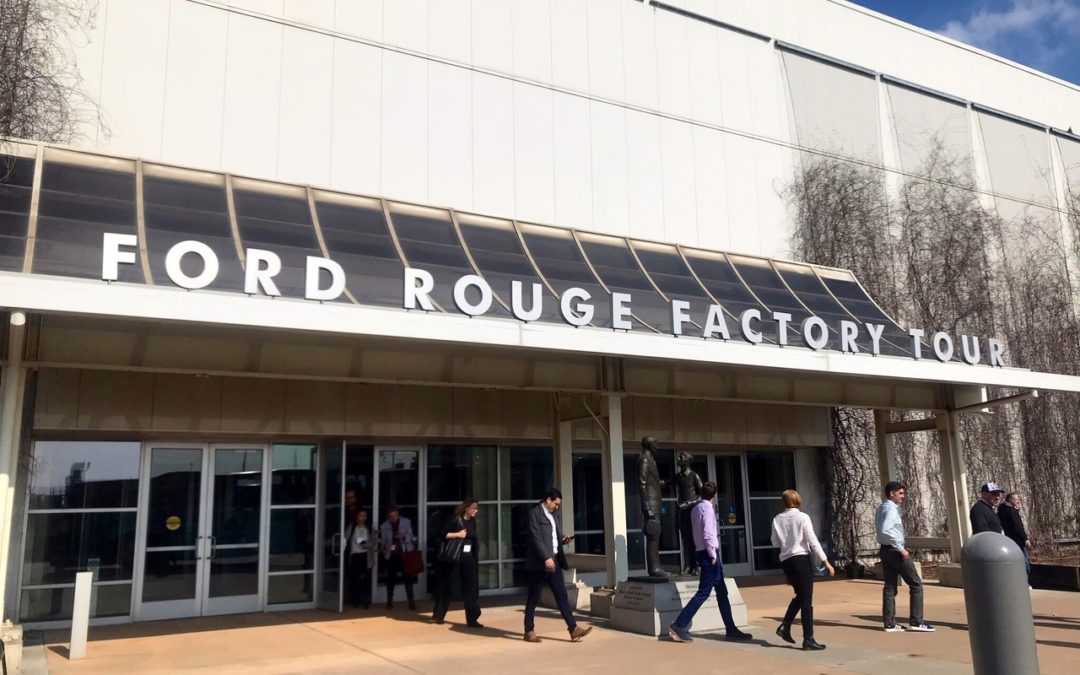
by Jane McCurry | Mar 22, 2019 | Electric Vehicles
When I left for Michigan last Friday, I was not expecting my electric vehicle advocates meeting to remind me how important trucks are to American culture. The conference provided the opportunity to tour the Ford Rouge Factory and Rivian, the new “electric adventure vehicle” maker. Funnily enough, both experiences centered around pickup trucks. On the surface, trucks don’t exactly seem like the electric vehicle advocate’s dream, but perhaps we needed this conversation to help us think about really reaching the masses with electric vehicles.
Ford Rouge Factory Tour
The Ford Rouge Factory produces the iconic F-150. No photos during the tour were allowed, so I can’t share too much, other than that it was a fascinating experience to see the manufacturing facility in full swing. Workers literally put trucks together while we watched. Someone on the tour with me described it as “a ballet” of workers and machinery, each going at the exact correct pace to keep up with the production schedule and snap vehicles together seamlessly.
What struck me was the size of the vehicles. On the day we went, the factory produced extended cab trucks. They were giant! It was amazing to watch these cars roll off the line (every 53 seconds!). I highly recommend visiting Rouge Factory if you find yourself in Southeast Michigan.
In January, Ford announced plans to make an electric version of the F-150. I don’t know when or where yet, but I hope I’ll have the opportunity to tour the factory where electric F-150s are produced, too.
Rivian
Rivian is a start-up company that is developing “the world’s first electric adventure vehicles.” In February, Rivian announced a $700 million investment round, led by Amazon. They are working on a pickup truck and an SUV that are capable of taking you from the coast to the mountains and back on a single charge. Rivian’s cars look cool and have practical additions like the “gear tunnel” to give you even more space to store your adventure gear.
The first Rivian vehicle will be the R1T, an electric pickup truck. It’s expected to hit production in late 2020. Coincidentally, Rivian is testing its truck’s performance with a car that’s disguised as an F-150. There aren’t any ties between the two automakers*, Rivian just wants to test their technology without gaining attention, and the F-150 cab allows them to do just that.
Rivian’s Headquarters is in Plymouth, Michigan. You may remember from a previous blog that I grew up in Metro-Detroit – I actually went to Plymouth High School. It’s so fun to go home and see new companies combing transportation and technology in my old stomping grounds.
UPDATE: Ford Invests $500M in Rivian
Today (April 24, 2019), Ford announced a $500 million investment in Rivian. So much for my “no ties” statement above! Rivian and Ford will work together to create an all-new electric car, which will be sold under the Ford brand. Ford is developing more electric vehicles for the market and hopes to use the Rivian “skateboard” – the bottom part of the car that contains the drivetrain, batteries, and brakes – in addition to their current plans. The partnership should benefit both companies, and put more electric cars options on the market.
What are the chances I visit both companies just weeks before the big announcement! As a Midwesterner, EV-advocate, and Michigan-native, I am really excited to see two Michigan companies coming together in the name of electric cars. Stay tuned, I’m confident we will continue to see auto manufacturers announce commitments to further electrify their car offerings.
Things are Picking Up for Electric Pickups
In other electric pickup truck news, Tesla is teasing a new model as well. Lesser known companies Bollinger and Atlis are also both expected to drop new electric pickup trucks soon.
It’s an exciting time for the auto industry and electric vehicle advocates. I think these tours highlight that the transportation landscape, and the conversation, is changing in ways we didn’t expect. Drivers want electric trucks, and manufacturers want to provide them. The surge in electric pickup truck options is evidence that electric vehicles aren’t just for the sedan-driving eco-minded consumer, they’re for everyone.
For more info on the number of electric vehicle options available soon, check out our infographic, Electric Vehicle Market Outlook.
*See UPDATE above.
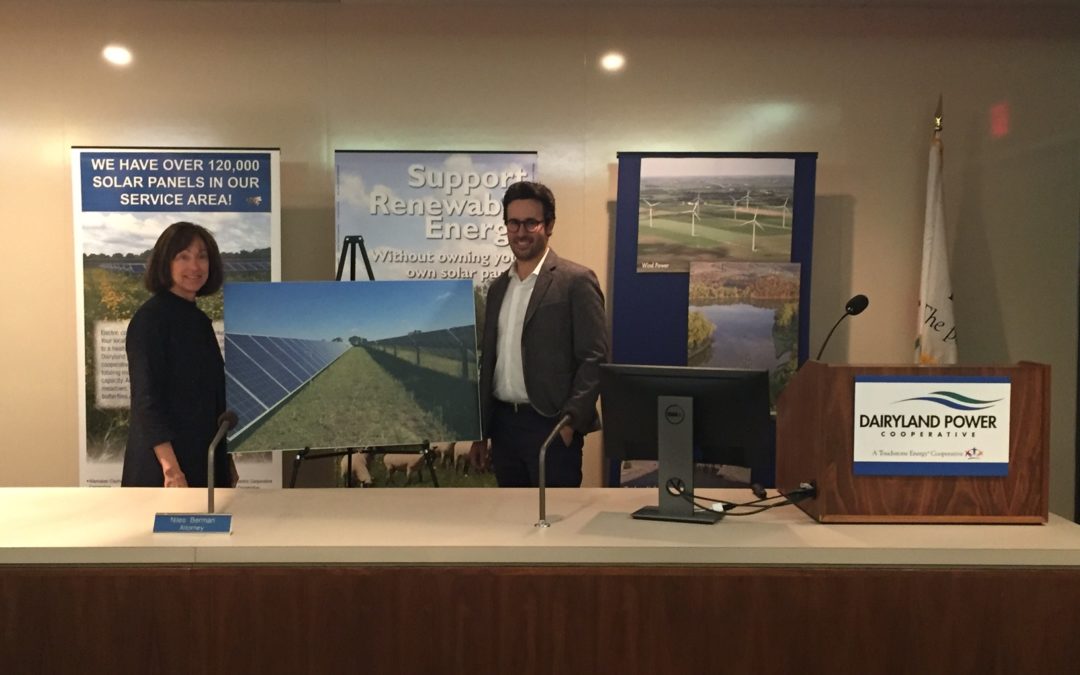
by Tyler Huebner | Mar 18, 2019 | Renewables, Solar, Utilities
Today at their headquarters in La Crosse, Dairyland Power Cooperative announced that it will be purchasing electricity from a major new Wisconsin-based solar energy facility being developed by Ranger Power.
The partnership involves a 149 megawatt solar power facility called Badger State Solar which is planned to be located in Jefferson County, Wisconsin. Ranger Power is planning to develop, own, and operate the project. Dairyland Power Cooperative will purchase all the electricity generated from the project through a long-term power purchase agreement.
The project will produce enough electricity to provide the equivalent annual needs of about 20,000 homes. If all approvals are granted from local and state permitting processes, construction would begin in 2020 and operation would commence in 2022.
RENEW Wisconsin’s Executive Director Tyler Huebner said, “Today’s announcement shows that solar power has become a cost-effective resource for Wisconsin’s major power providers such as Dairyland Power. By committing to this solar project which will be built right here in Wisconsin, Dairyland will meet its goals of a safe, reliable, affordable, and increasingly sustainable and diversified energy supply. We congratulate Dairyland Power Cooperative and Ranger Power on this historic announcement!”
By RENEW Wisconsin’s count, the state had about 103 megawatts of solar at year-end 2018, with Dairyland Power Cooperative responsible for about 20 megawatts, already placing it as the leader in the state for the amount of solar installed to-date. This project, along with a number of additional major solar projects, will dramatically increase the amount of solar energy produced in Wisconsin in the next five years.
More information about the project is included in the links below.
Dairyland Power Press Release
Badger State Solar Project Fact Sheet
Badger State Solar Project Economic Impact
Featured in image: Dairyland Power President and CEO Barb Nick and Ranger Power CEO Paul Harris
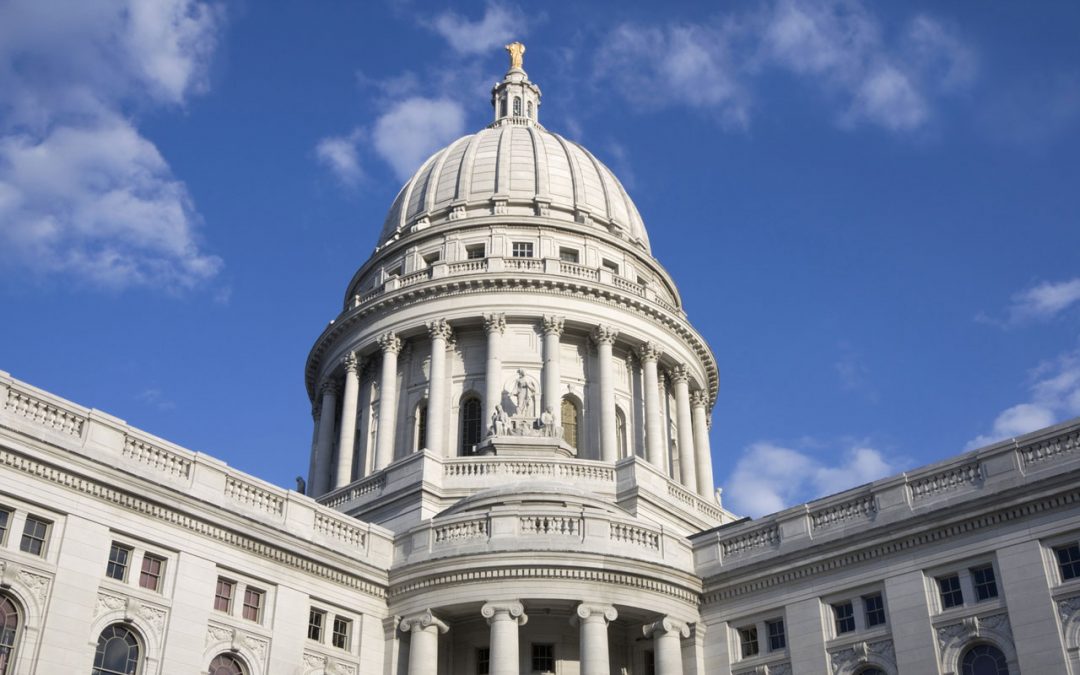
by Jim Boullion | Mar 13, 2019 | Advocacy, Electric Vehicles, Focus on Energy, Policy, Renewables
On February 28, Governor Tony Evers released his 2019-2021 state budget. The budget bill will now go to the Joint Finance Committee who will review it and get briefings on the various provisions from the Governor’s administration and specific state agencies. The committee will also hold a series of hearings around the state to learn what the general public thinks about the budget bill provisions. By statute, the budget bill is supposed to be complete by July 1st, but that date is not often met, regardless of which party holds power. Between now and then, please contact your state legislators and let them know what you think about the various provisions of the bill. You can find your legislator’s contact information by following this link.
Below is a short summary of the Governor’s proposals related to clean energy.
100% Carbon-Free Goal
Establishes a state goal that all electricity produced within the state should be 100 percent carbon-free by 2050. While not a mandate or requirement, writing this goal in Wisconsin’s statutes will help state agencies, the legislature and the public know what we are trying to achieve.
Allocate $75 million in bonding to fund energy conservation projects on state-owned facilities. $25 million of these funds would be allocated to renewable energy projects.
These funds will be used for energy conservation projects to help state agencies and UW System meet their energy reduction goals and reduce utility costs. Renewable projects could include solar, wind, standby generators or geothermal enhancements to state facilities. The achieved savings from the reduction in utility costs would be used to pay the debt service payments on the bonds.
Focus on Energy
Allows the Public Service Commission to increase funding for the Focus on Energy program beyond the current statutory limit of 1.2 percent of utility revenues. The bill also requires the PSC to submit to the Joint Finance Committee a proposal for spending a greater percentage on the programs than is currently allocated (The amount is to be determined by the PSC).
Create the Office of Sustainability and Clean Energy
Transfer the State Energy Office and its employees from the PSC to the Department of Administration. The new office would:
- Administer a $4 million clean energy research grant.
- Advise state agencies in developing sustainable infrastructure to reduce energy use.
- Study and report on the status of existing clean and renewable energy efforts by the state.
- Serve as a single point of contact to assist organizations pursuing clean energy opportunities.
- Identify clean energy funding opportunities for private and governmental entities.
- In coordination with other state agencies, collect and analyze data needed for clean and renewable energy planning and review those plans with the governor and legislature.
Use a Portion of VW Settlement Funds for EV Charge Station Grants
Spend $10 million of the remaining $25 million from the Volkswagen emissions settlement on grants for electric vehicle charging stations. The rest would be dedicated to replacing public transit vehicles. $42 million of the original $67.1 million that Wisconsin was allocated from the settlement was spent in 2017-19 for replacement of state vehicles and the transit assistance program.
Hybrid Vehicle Registration Fees – Definition expanded to include all hybrids, not just PHEV’s
All hybrid vehicles (any vehicle that uses a battery to increase mpg) would pay the additional $75 annual fee that was originally designed to cover only Plug-in-Hybrid vehicles. This is in addition to the proposed $96 (up from $75) annual vehicle registration fee paid by all vehicles. All-electric vehicles would continue to pay the additional $100 annual fee that was already in the statutes. The fee is designed to recover the sales taxes that would have been paid if they were powered by gasoline that is used to support the transportation budget.
WEDC Tax Credits for Energy Efficiency or Renewable Energy
WEDC would be allowed to award business tax credits of 5% for investments made on projects that improve energy efficiency or that generate energy from renewable resources.
Ratepayer Advocate (Intervenor Compensation) Grants
The bill increases from $300,000 to $500,000 the annual grants the PSC is allowed to make to nonprofit corporations that advocate on behalf of utility ratepayers.
If you have any questions or would like more information about any of these energy related issues please contact Jim Boullion, RENEW Wisconsin’s Director of Government Affairs.
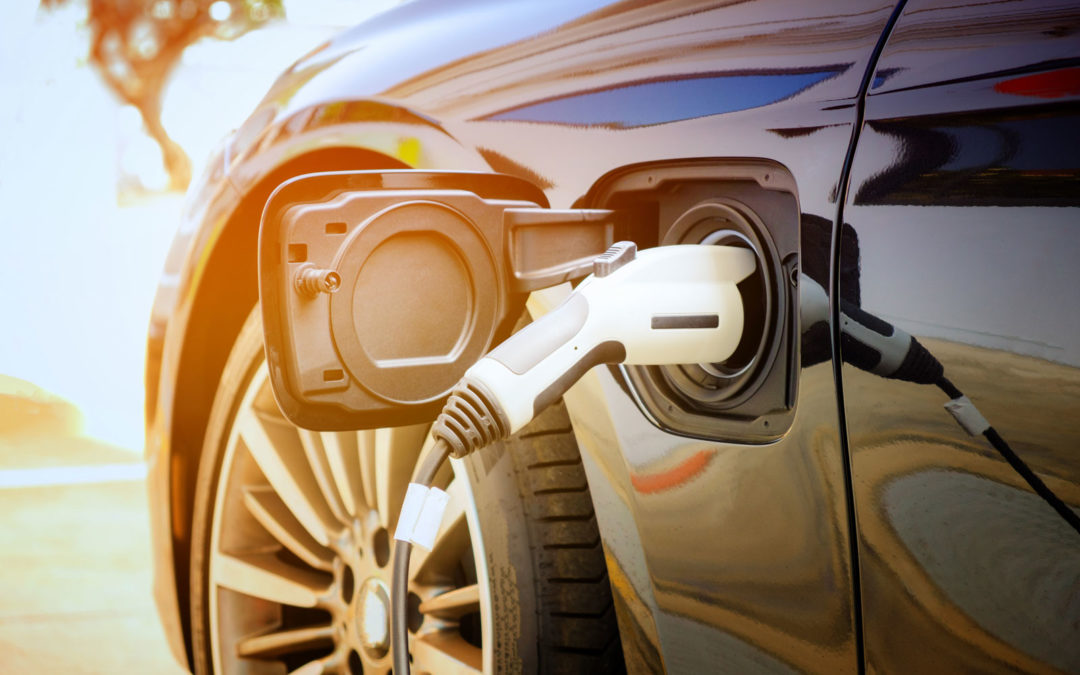
by Jane McCurry | Mar 6, 2019 | Electric Vehicles, Policy
Last fall, I wrote a blog about the Volkswagen Mitigation Settlement, A Big Opportunity for Electric Vehicles. The Federal Volkswagen Mitigation Trust awarded Wisconsin $67.1 million to replace aging diesel vehicles. The goal of the settlement is to counteract the damage done while over-polluting Volkswagen cars were in operation.
Wisconsin’s plan for spending approximately two-thirds of the funding, or $42 million, included replacing transit buses and state fleet vehicles. Now, it’s time to decide what to do the last third of that funding, about $25 million.
Good News!
Governor Evers released his State of Wisconsin Budget in Brief last Thursday. Good news! It included an allocation for the rest of Volkswagen Settlement funding, with a specific call-out for $10 million to fund electric vehicle charging infrastructure in Wisconsin. The budget calls for the $10 million to be administered as a grant program by the Department of Administration.
This is a big win. Per the settlement terms, states are allowed to use up to 15% of their funding to pay for electric vehicle infrastructure, which comes to just about $10 million in Wisconsin. Taking full advantage of this opportunity means Wisconsin drivers can drive with the confidence that they can recharge in public if they need to. This funding will go a long way to support a vast network of fast recharging stations across the entire state.
The rest of the funding, $15 million, was earmarked for more transit bus replacements. Our hope is that these buses will be electric. Electric buses are so much cheaper to operate, more efficient, and produce zero point-source pollution, making them a “win” for everyone.
What’s Next?
Before these Volkswagen allocations can be spent, the budget needs to pass through the legislature. While there is a chance that this budget will not pass, I am really excited to see a commitment to electric transportation. If this commitment makes it through the legislature, Wisconsin will join 44 other states that have also pledged to take advantage of this opportunity.
It’s a long road to ensure every Wisconsinite has access to affordable and clean transportation. This is a big step on that journey. Stay tuned for more details as we continue to follow the Volkswagen Mitigation Settlement and advocate for using Wisconsin’s funds to advance electric transportation.





